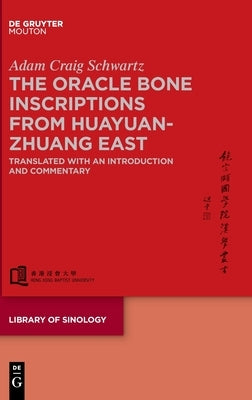Before you leave...
Take 20% off your first order
20% off
Enter the code below at checkout to get 20% off your first order
Discover summer reading lists for all ages & interests!
Find Your Next Read

Since 1899 more than 73,000 pieces of inscribed divination shell and bone have been found inside the moated enclosure of the Anyang-core at the former capital of the late Shang state. Nearly all of these divinations were done on behalf of the Shang kingsand has led to the apt characterization that oracle bone inscriptions describe their motivations, experiences, and priorities. There are, however, much smaller sets of divination accounts that were done on behalf of members of the Shang elite other than the king.First noticed in the early 1930's, grouped and periodized shortly thereafter, oracle bone inscriptions produced explicitly by or on behalf of "royal familygroups" reveal information about key aspects of daily life in Shang societythat are barely even mentioned in Western scholarship.
The newly published Huayuanzhuang East Oracle Bone inscriptions are a spectacular addition to the corpus of texts from Anyang: hundreds of intact or largely intact turtle shells and bovine scapulae densely inscribed with records of the divinations in which they were used. They were produced on the behalf of a mature prince of the royal family whose parents, both alive and still very much active, almost certainly were the twenty-first Shang king Wu Ding (r. c. 1200 B.C.) and his consort Lady Hao (fu Hao). The Huayuanzhuang East corpus is an unusually homogeneous set of more than two thousand five hundred divination records, produced over a short period of time on behalf of a prince of the royal family. There are typically multiple records of divinations regarding the same or similar topics that can be synchronized together, which not only allows for remarkable access into the esoteric world of divination practice, but also produce micro-reconstructions of what is essentially East Asia's earliest and most complete "day and month planner." Because these texts are unusually linguistically transparent and well preserved, homogeneous in orthography and content, and published to an unprecedentedly high standard, they are also ideal material for learning to read and interpret early epigraphic texts.
The Huayuanzhuang East oracle bone inscriptions are a tremendously important Shang archive of "material documents" that were produced by a previously unknown divination and scribal organization. They expose us to an entirely fresh set of perspectives and preoccupationscentering ona member of the royal family at the commencement of China's historical period. The completely annotated English translation of the inscriptions is the first of its kind, and is a vibrant new source of Shang history that can be accessedto rewrite and supplement what we know about early Chinese civilization and life in the ancient world. Before the discerning reader are the motives, preoccupations, and experiences of a late Shang prince working simultaneously in service both for his Majesty, his parents, and hisown family.
Adam Craig Schwartz, Jao Tsung-I Academy of Sinology, Hong Kong Baptist University, Hong Kong, China.
Thanks for subscribing!
This email has been registered!
Take 20% off your first order
Enter the code below at checkout to get 20% off your first order